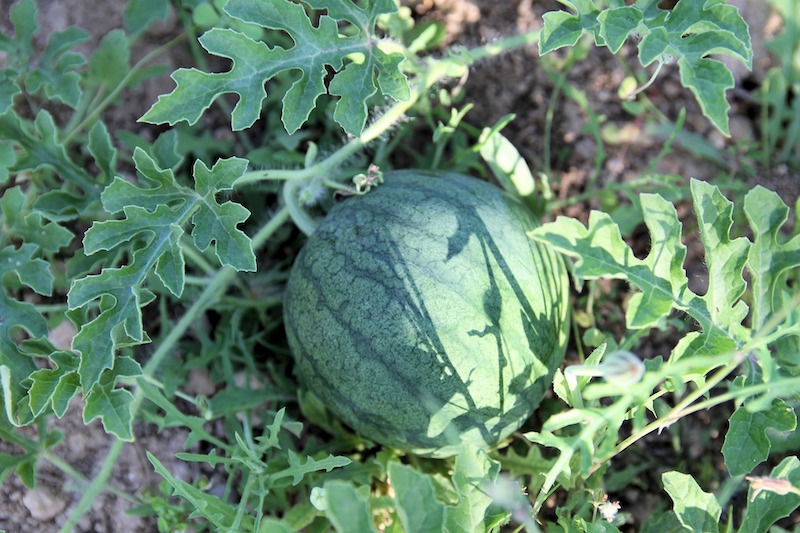Is there anything better than biting into a sweet, juicy, freshly picked strawberry that is still warm from the sun? Or watching a peach tree that you nurtured for three years begin to produce adorable, fuzzy fruits? From the giant, spiky Jackfruit to pinhead-sized Watermeal, fruits are truly fascinating because of their various sizes, shapes, colors, and flavors. Whether you are looking to plant a few strawberry plants in a pot this summer or nurture a hedge of blueberries, here are some basic tips and tricks that can make your fruit-growing journey easier and more enjoyable.

Caring For Fruit Plants
Fruits are defined as the seed-bearing ripened ovary of a flower. That means once a flower is pollinated, the specialized structure that develops is considered a fruit. Some fruits are annuals, like watermelons, and complete their entire life cycle in one growing season before dying in the winter. Others, like blueberry bushes, are perennial plants and can survive the winter to produce again the following year (depending on the region). There are easy-to-grow fruits like strawberries, needing little more than regular water and nutrients, while others require a bit more finesse, like peach trees with their sensitivity to pests and need for special pruning. This great variety of fruits makes it all that more important to understand how those fruits are grown. Before planting a favorite fruit in your yard, dig into a bit of research to ensure that you are able to provide enough sunlight, have the right soil conditions, know how much to water, and understand what kind of maintenance it will require.
Planting Fruits
Sunlight is one of the most important things to consider when deciding what fruits to grow. Fruit often takes a lot of energy for a plant to produce. Because energy is provided by the sun, some plants need at least 6 hours of sunlight before they can produce fruit. Others, like brambly blackberries and raspberries, may be better suited for a shadier location.
Soil quality is something that can make or break fruit production. Fruiting plants on average need high-quality, well-draining, and nutritious soil in order to grow well. Certain fruits like blueberries need special soil conditions such as an acidic pH in order to thrive. This often means testing your soil, amending it with compost, manure, or soil conditioner, or replacing soil altogether with high-quality garden soil, depending on what you are trying to grow. When planting fruit trees, make sure to dig the hole extra wide and amend the soil so that the tree will have decent soil to grow in for years to come.

When planting annual fruits that are sensitive to the cold, it is a good idea to find out your region's last average frost date. This is the time where it is usually safe to begin planting an edible garden with fruits like watermelon and cantaloupe, though you will still want to pay attention to the weather for any sneaky late-season freezes. For those woody perennial fruits like blueberry bushes, apple and peach trees, and grape vines, pruning typically needs to occur much earlier in the winter or early spring in order to prevent damage to developing buds.
Lastly, plant spacing is just as important for fruiting plants as it is for vegetables. Giving plants plenty of room to grow, especially perennial fruit trees and bushes, allows them to access the most sun, water, and nutrients possible. Healthy blooms are vital for the production of fruit, and plants that are too close together may struggle to bloom as vigorously. Within the plant, proper pruning and spacing of branches and culling of blossoms will help fruit trees and bushes produce higher-quality fruits as well.
Watering Fruit Plants
How much and how frequently to water fruiting plants is going to vary greatly. From small clusters of strawberry plants to thirty foot tall apple trees, you will want to research your particular fruit crops to know how to best provide them water without oversaturating their roots or increasing the risk of disease. Melons, for example, may need 1-2 inches of water per week; soak the roots every day or two, and avoid overhead watering since cucurbit leaves are susceptible to powdery mildew and other foliar infections. Once melon plants begin producing fruit, you can cut back on watering. Established fruit trees, on the other hand, can survive with less frequent but deep waterings. They will benefit from a slow drip system that applies targeted water around the roots. Young fruit trees will need to be watered more frequently as their roots grow, whereas mature fruit trees may only need supplemental water in the hottest, driest parts of the year.
Fertilizing Fruit Plants
Fruiting plants benefit from fertilizer just like vegetables. Fertilizer is composed of three main macronutrients: nitrogen, phosphorus, and potassium, displayed as a ratio “NPK”. Many formulas also include micronutrients, like calcium, boron, magnesium, iron, and many more. Each of these nutrients has a specific role in leaf, stem, root, flower, and fruit development. Because of this, you may need to use different fertilizers at different times of plant growth.
Watermelons, for example, benefit from nitrogen-based fertilizers early on in their growing season, since nitrogen is responsible for leafy green growth. Once flowers start to develop, you will need to switch to a fertilizer lower in nitrogen and higher in phosphorus and potassium, which better supports flower and fruit growth. Because blueberry bushes grow best in acidic soil, they require a fertilizer that contains components like ammonium sulfate that further acidify the soil. Fruit trees benefit from a yearly application of a high-nitrogen fertilizer that supports new growth. Ultimately, it is important to look into what your specific plants need rather than applying a generic fertilizer to them all.
Growing Fruit In Pots
While not all fruit-bearing plants can be grown in containers, some varieties do not need much space and will grow well in pots. One prime example is strawberries. They even make pots specifically for strawberries, with tiers of openings ready for individual strawberry plants. With proper pruning and care, some fruit trees can be grown in large patio containers. It is important to remember that while an apple tree variety may be cold hardy in your agricultural zone, keeping it in a pot exposes its roots to more temperature extremes than if it was planted in the ground. For this reason, perennial plants kept in pots may need to be moved to a protected location in the winter. In addition, potted plants will dry out faster than those in the ground, requiring more frequent watering. Similarly, because potted plants are watered more often, their soil is often depleted of nutrients faster, requiring more frequent fertilizer applications.

Harvesting Fruits
When purchasing seeds, a seedling, or even a mature fruiting tree or shrub, be on the lookout for harvest timing information. Watermelons, for example, may be ready to pick between 70 to 100 days after planting. Woody bushes like blueberries, blackberries, and raspberries can produce fruit for a few weeks to months, depending on the variety, and can be harvested continuously. Fruit trees can take a few years until they are mature enough to produce fruit, though the wait is always worth it! Apples are ready for harvest when they pop off the branch with a gentle twist. The underside of a watermelon will turn from white to yellow or cream colored when it is ripened.
There are tools out there to assist in fruit harvesting, such as a fruit picker basket that allows you to reach fruit on the tallest branches. It may take some research and experience to know just when fruit is ready for the picking. There is a wealth of knowledge on the internet and within your local gardening community, just ready for the picking!
 |
Author Lynn Gusman - Published 3-05-2023 |
